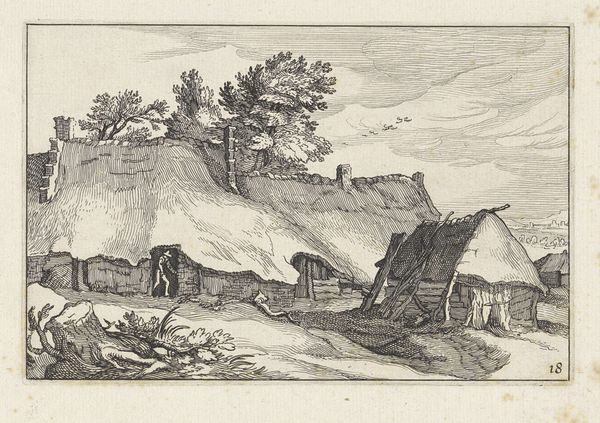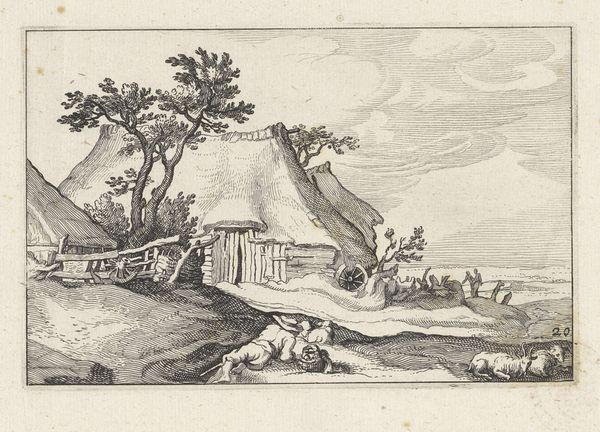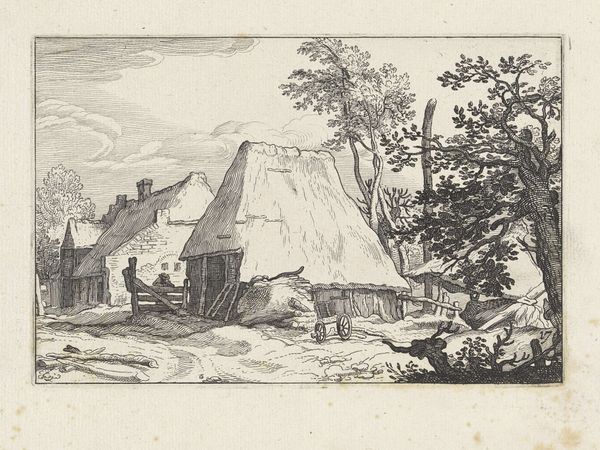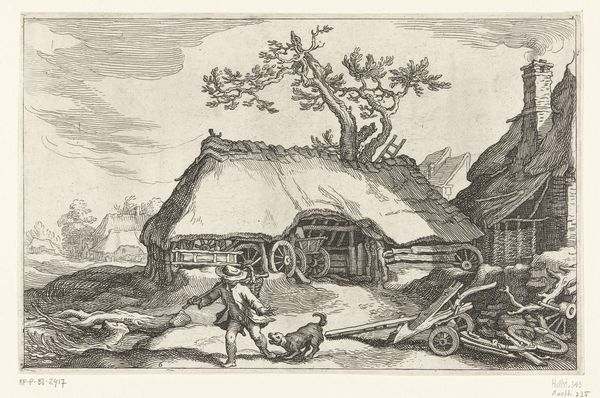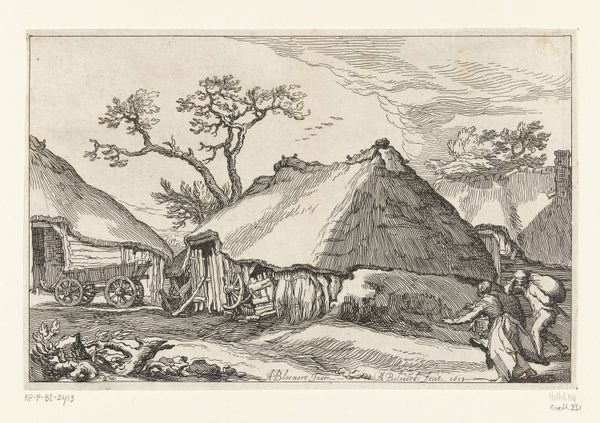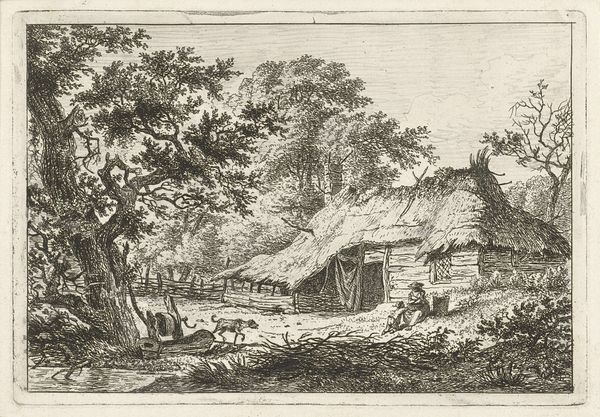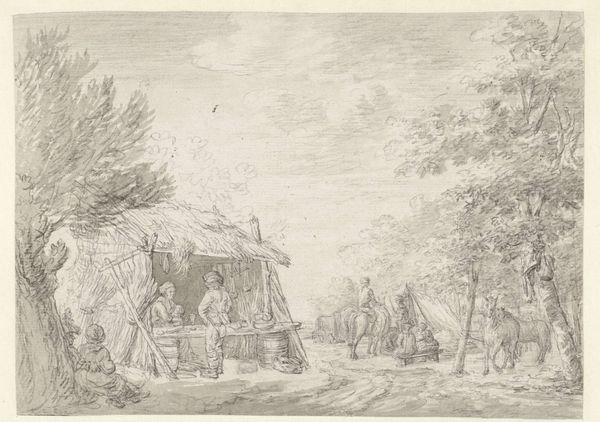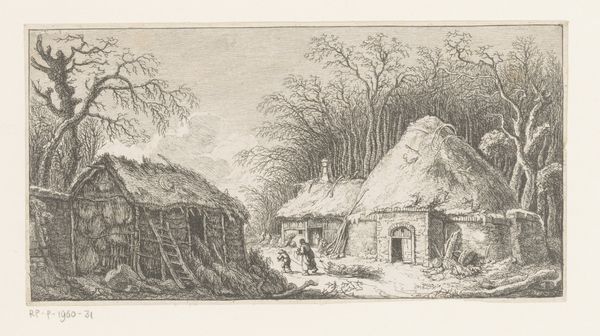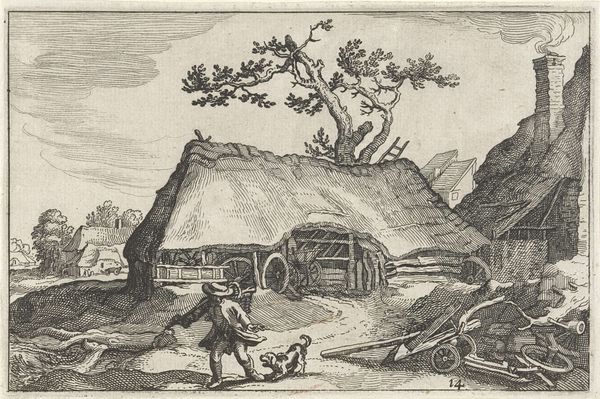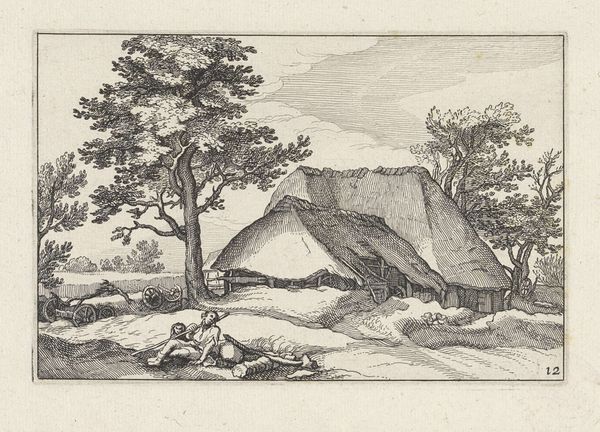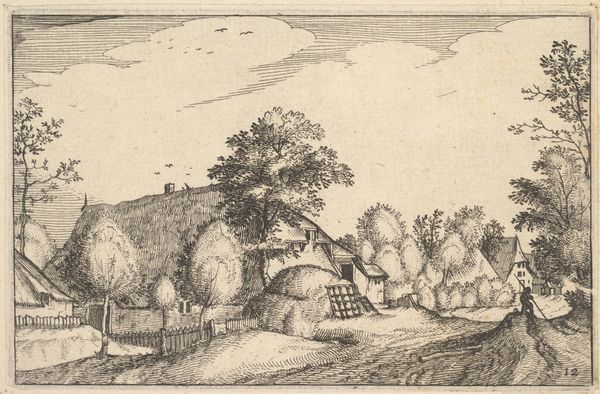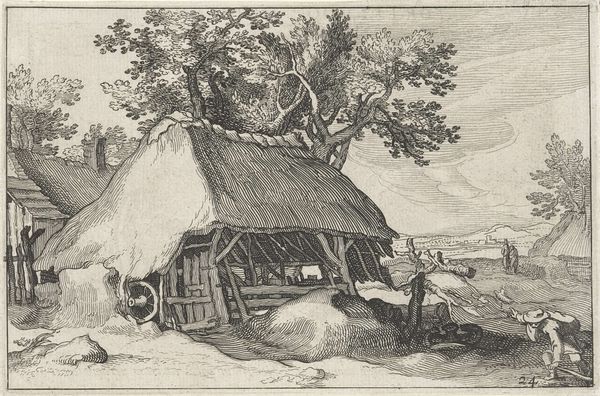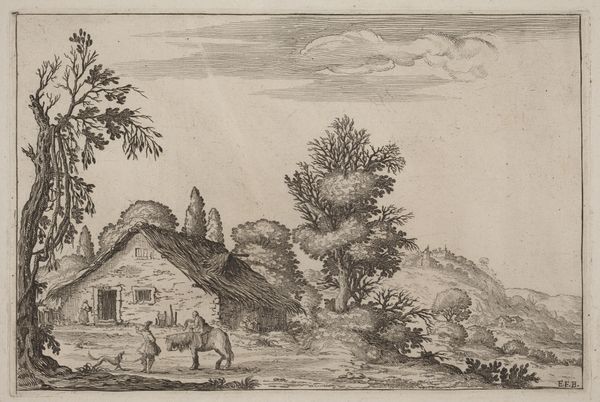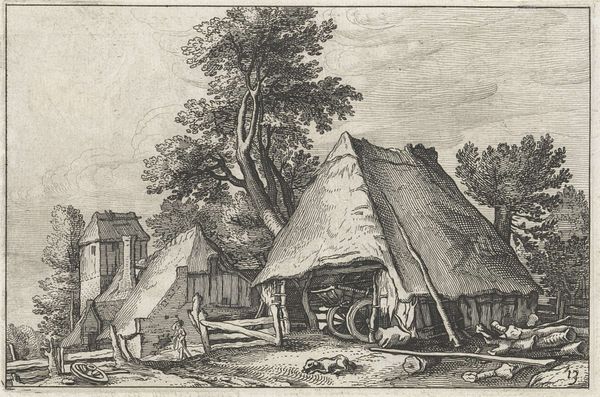
print, engraving
#
dutch-golden-age
# print
#
landscape
#
figuration
#
line
#
genre-painting
#
engraving
#
realism
Dimensions: height 105 mm, width 160 mm
Copyright: Rijks Museum: Open Domain
Curator: Allow me to draw your attention to Claes Jansz. Visscher's "Farmhouse and a Cart in a Yard," a compelling engraving from 1620, housed here at the Rijksmuseum. Editor: My first impression is the weight of the lines; they build a space that feels both dense and ephemeral. Look at the way they render that looming thatched roof. Curator: Indeed. Observe how Visscher masterfully utilizes the graphic possibilities inherent in engraving. Note the precise hatching and cross-hatching that creates areas of light and shadow, volume and texture. This is all achieved through line. Editor: And what lines those are. Consider the time and skill embedded within those repeated strokes to conjure the roof's thatched surface and create the play of light we see across it. This method, a means of picturing the world, involved manual labor—the patient application of mind and body toward production. Curator: Absolutely. Consider too how these formal elements coalesce. The linear perspective directs the viewer’s gaze, framing a genre scene—the farmyard—within the landscape itself, structuring a Dutch Golden Age view of rustic life. Editor: Yes, and a life that is undeniably shaped by its immediate environment. The etching reveals so much about building and craft. Straw isn't merely a detail; it is a marker of agricultural processes and available material that went into sheltering the occupants of this rural home. The labor to build the structure as well as to maintain it resonates across the centuries. Curator: Quite right. In Visscher’s detailed treatment, we might even glean insight into the period’s social values. The etching embodies the common ideals tied to simple living, the dignity of labor, and an harmonious connection with nature, common themes throughout this period. Editor: For me, it highlights our profound interrelationship with raw materials, offering tangible connection between us—the viewer—and those early 17th-century occupants who made their lives within it. It underscores the work required for basic necessities. Curator: Ultimately, Visscher’s composition prompts an encounter with form itself: pure and refined, and an invitation to look closely. Editor: An encounter also, I think, with lives forged through materials, manual effort and available skills; elements intrinsically part of making art and life.
Comments
No comments
Be the first to comment and join the conversation on the ultimate creative platform.
